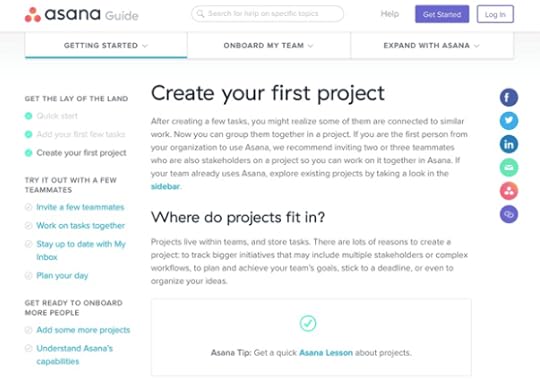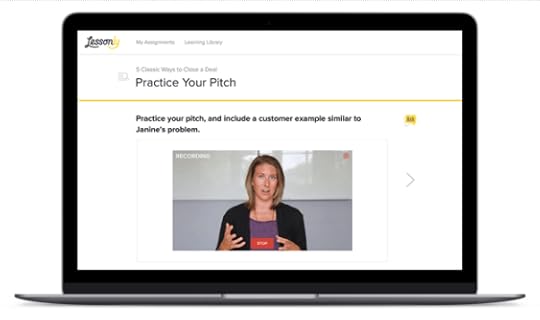Shep Hyken's Blog, page 84
May 28, 2021
Guest Post: How the Customer Experience is Changing in the Effortless Economy (And What this Means for Retailers)
This week we feature an article by Megan Wenzl, the SEO Content Manager at Linnworks. She discusses what retailers need to focus on when it comes to total commerce and the effortless economy.
Imagine a customer goes online to buy a new pair of golf shoes.
This customer has multiple options on how she’ll shop for the golf shoes. She can go directly to a retailer’s website, Amazon, or even Facebook to find the perfect pair of shoes for her next round of 18 holes.
In another example, when the spatula breaks while flipping pancakes and needs to be replaced, the customer buys the new spatula through Amazon.
In a third example, a customer wants a new raincoat. He searches for a “raincoat” product in Google. He reads a few articles on raincoats then selects the one he wants. He goes to the brands’ website to purchase the coat. Done.
Shopping used to be an activity people did. But now, shopping is a constant experience. It’s always there.
So what can retailers do to make sure the customer experience in eCommerce is positive and engaging for customers? What can they do to win loyal customers in this effortless economy?
To find out, Linnworks conducted a survey of 1,000 shoppers.
The research is in. And, retailers have got to get eCommerce right. One eCommerce trend: Customers value convenience the most: 76% of shoppers say that convenience is their key priority in selecting a retailer.
In addition, nine in ten shoppers prioritize using a retail site that offers a seamless experience. This means consumers want to be able to purchase an item with the least amount of barriers possible. As an example, consumers want to make sure that their shipping details are remembered for the future.
Let’s discuss what retailers need to focus on when it comes to total commerce and the effortless economy.
Create seamless customer journeysAs you know by now, consumers expect a positive, convenient customer experience. While this isn’t surprising, getting it right isn’t easy.
For customers to keep coming back to buy your product or service, every touchpoint with your brand needs to be convenient and easy to use. 58% of shoppers have stopped using an online store because of it being difficult to use. For consumers to take action, it should be as easy as possible for them to shop for your products.
One aspect that adds to convenient shopping is providing a guest checkout option. Customers can then choose to complete their purchase without registration. The guest checkout option is especially helpful for first-time shoppers to your website.
The other important feature that customers expect is the ability to shop with a brand across various types of devices. Customers want to be able to interact with your brand on a smartphone, tablet, or computer without much interruption.
Sell on socialImagine a customer is scrolling through their Facebook feed. They want to shop for a pair of shoes while they’re there. They can shop for shoes and order them right on the platform without having to go to another online store. Easy.
Simply put, social commerce is the shopping experience on social media. Facebook is the most trusted social site for commerce. And, 82% of customers say they like the convenience of social shopping.
Brands must make it easy for customers to purchase products on social sites like Facebook, with the option to check out right on the platform.
Get delivery rightDelivery has a significant impact on customer loyalty. Making sure delivery goes right is essential to ensuring customers come back to buy from you again. 95% of shoppers say convenience delivery options are a major factor in the online retailers they use.
How does delivery go well? Transparency. In fact, 62% of customers say they are more loyal to a retailer who is honest and open about what delivery costs and the time it takes to deliver.
And while we’re on the subject of delivery, returns are just as important. Customers want returns to be easy. For example, 89% of customers don’t want returns to involve customer service assistance, and 87% expect a prepaid return label.
Personalize the experienceAlthough consumers are concerned about issues with security and privacy when it comes to sharing data —about four in five, in fact — more than half think the risk is worth taking because they are getting a better shopping experience. And 60% of shoppers say sharing personal information makes the shopping experience more convenient.
Personalization includes letting the customer have the option to check out as a guest or be remembered for a later purchase.
But of course, personalization is much more than that. It’s about building relationships with customers over time. It’s knowing that customers start their journey with you before they purchase. It’s knowing that the relationship continues long after the sale. Getting messaging right and knowing who your customers are serve as the foundation for creating personalized experiences — experiences that elicit an emotional connection from customers.
The TakeawayCommerce is ‘an always-on’ experience. It includes social media, online marketplaces, and retailer’s branded websites. It’s important for retailers to create positive customer experiences for customers across these channels. Brands really need to meet or even exceed customer expectations when it comes to the shopping experience online. Brands need to be where their customers are.
To build relationships with customers in eCommerce today, brands must offer convenience. And the demand for convenience only keeps growing. Creating seamless experiences is a key component of how you’ll win loyal customers over their lifetimes.
Megan Wenzl is the SEO Content Manager at Linnworks, a total commerce solution that connects, manages, and automates commerce operations. Megan enjoys creating useful, informative stories to help businesses succeed. When not writing, Megan enjoys spending time with her family.
 For more articles from Shep Hyken and his guest contributors go to customerserviceblog.com.
For more articles from Shep Hyken and his guest contributors go to customerserviceblog.com.
Read Shep’s latest Forbes article: How Can You Compete With Amazon?
The post Guest Post: How the Customer Experience is Changing in the Effortless Economy (And What this Means for Retailers) appeared first on Shep Hyken.
May 26, 2021
The Worst Sales Call Ever
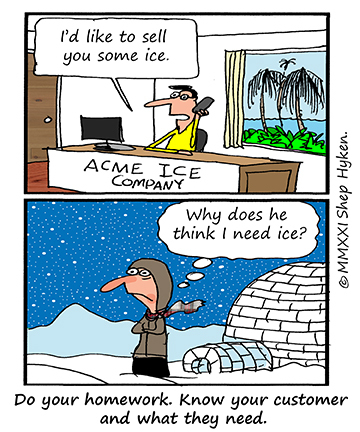 Even though this is about a sales presentation, it ties into customer service. It has to do with preparation, knowing your customer, understanding what they want, and more. This is what great salespeople do to prepare for a meeting with a customer or client. This is how anyone delivers a better experience, regardless of whether it’s during the sales process or any other interaction the customer has with people in a company. It is how relationships are built.
Even though this is about a sales presentation, it ties into customer service. It has to do with preparation, knowing your customer, understanding what they want, and more. This is what great salespeople do to prepare for a meeting with a customer or client. This is how anyone delivers a better experience, regardless of whether it’s during the sales process or any other interaction the customer has with people in a company. It is how relationships are built.
So, maybe the story I’m about to share isn’t truly the worst sales call ever, but it was really bad. I’ll let you be the judge.
I was contacted by a vendor who wanted to upgrade me to a more expensive product. No doubt, the product would be better for us. I was intrigued, but also recognized the cost would be substantially more.
The CallWe agreed to meet on Zoom. I was on time. He was not. Just a minute late, but late nonetheless. I could let this slide if it weren’t for what followed. The lesson: Be on time. Showing up late is a sign of disrespect.After a few minutes of listening to him, I wondered if he knew what we did at Shepard Presentations, so I asked him. He became quite uncomfortable. I could tell he was typing in our company name. He responded with, “You’re a design firm.” I asked, “What do we design?” He said, “Graphics.” Wrong answer! I told him, “I’m customer service speaker and we provide customer service training.” That made him even more uncomfortable. The lesson: Know who your customer is. If you can, plan in advance, do a little homework and spend a couple of minutes (or more) finding out what your customer does. And if you don’t know, ask.Now for something more positive. Eventually, he realized we were a small business. He shared that he focused on enterprise-size businesses, but his company had someone who supported smaller businesses. He offered to make an email introduction. I thought, “Let’s see how long it takes to make that introduction.” Good news! Shortly after our call, he made the email introduction. He also accepted that he wasn’t prepared and apologized. The lesson: Actually, there are two of them. First, be quick to admit when you’ve made a mistake and make the appropriate apology. And second, be sure to follow through on any promise you make, such as his offer to connect us with the right person.Yes, it was a terrible sales call. But you can see that it ended on a positive note. Will I give the company a second chance? Because of the follow-up, I’ll at least give them the chance to have a second chance. Even with this Moment of Misery, the sales rep managed to keep the door open for an opportunity to continue to do business with us.
Shep Hyken is a customer service expert, keynote speaker, and New York Times, bestselling business author. For information, contact 314-692-2200. For information on The Customer Focus™ customer service training programs, go to www.thecustomerfocus.com. Follow on Twitter: @Hyken
(Copyright © MMXXI, Shep Hyken)
The post The Worst Sales Call Ever appeared first on Shep Hyken.
May 25, 2021
Amazing Business Radio: Hank Ebeling
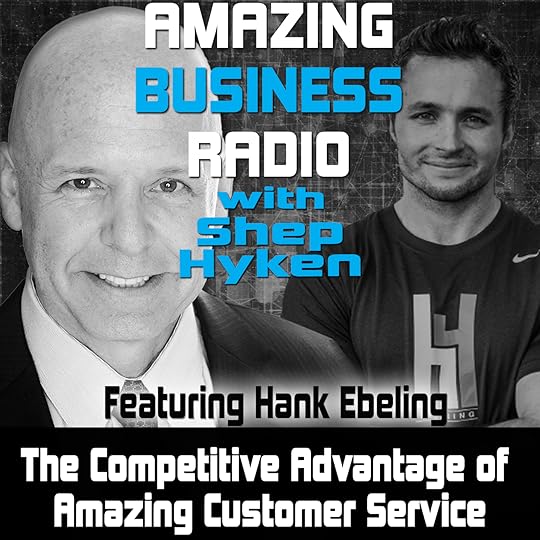 The Competitive Advantage of Amazing Customer Service How to Out-service Your Competition
The Competitive Advantage of Amazing Customer Service How to Out-service Your Competition Shep Hyken interviews Hank Ebeling, founder of H4 Training. They discuss the value of selecting the right people to carry out your vision of service.






 Top Takeaways:People can steal your ideas or create the same products. What they can’t take away is the level of service and relationships you’ve built with your customers.Everybody has customer service. You can win by focusing on creating customer connections and building relationships with your customers at a higher level than others.You can coach people on the technical aspects of the job. But, having empathy is something one just has or doesn’t have.Customer service starts with leadership. Leaders create the service vision and hire the right people to carry it out.When hiring someone, let them interact with other people in your business. You can tell a lot about a person by how they talk to other people that are not from a high-level position within your organization.Leaders need to participate in the onboarding process and set the tone of the business’ culture.Service aptitude is a person’s ability to exceed expectations. It comes from 1) Life experiences 2) Previous work experience 3) Current job experience. Teach your employees about your own culture of service.Figure out what makes your business stand out. You can have the same product or service as your competition but if you can out-service them, you will always win.Quotes:
Top Takeaways:People can steal your ideas or create the same products. What they can’t take away is the level of service and relationships you’ve built with your customers.Everybody has customer service. You can win by focusing on creating customer connections and building relationships with your customers at a higher level than others.You can coach people on the technical aspects of the job. But, having empathy is something one just has or doesn’t have.Customer service starts with leadership. Leaders create the service vision and hire the right people to carry it out.When hiring someone, let them interact with other people in your business. You can tell a lot about a person by how they talk to other people that are not from a high-level position within your organization.Leaders need to participate in the onboarding process and set the tone of the business’ culture.Service aptitude is a person’s ability to exceed expectations. It comes from 1) Life experiences 2) Previous work experience 3) Current job experience. Teach your employees about your own culture of service.Figure out what makes your business stand out. You can have the same product or service as your competition but if you can out-service them, you will always win.Quotes:“No matter what business you are in, it is extremely competitive. The only way to stand out is by delivering an outstanding service.”
“Make sure the people you bring in is a culture fit, first. Hire based on traits and not skills.”
“As your business is growing, you cannot sacrifice culture just to get more employees through the door.”
“You gotta care more about your customers than your competition.
About:Hank Ebeling is the founder of H4 Training and author of Crushing the Competition with Service: An Entrepreneur’s Guide to Delivering Outstanding Customer Service & Customer Experience.
Shep Hyken is a customer service and experience expert, New York Times bestselling author, award-winning keynote speaker, and your host of Amazing Business Radio.
This episode of Amazing Business Radio with Shep Hyken answers the following questions … and more:What is customer service aptitude?Should you hire for personality or skill?How can businesses successfully hire someone who fits with their culture?How can small businesses compete in today’s highly competitive landscape?What is the leader’s role in establishing work culture?The post Amazing Business Radio: Hank Ebeling appeared first on Shep Hyken.
May 24, 2021
5 Top Customer Service Articles of the Week 5-24-2021
Each week I read a number of customer service and customer experience articles from various resources. Here are my top five picks from last week. I have added my comment about each article and would like to hear what you think too.
How To Thank A Customer For Their Business | Tips, Tricks, & Budget-Friendly Ideas by Philipp Wolf(Custify) It’s crucial for those who are loyal to you to make sure they feel appreciated by going the extra mile for them. With a growing number of consumers influenced by word-of-mouth, don’t let your customers slip away!
My Comment: Dale Carnegie said, “A person’s name is to him or her the sweetest and most important sound in any language.” I agree. The second most important sound, at least in business, is when the customer says, “Thank you!” There are many ways to let customers know you appreciate them, and this article covers most of them, along with some expert opinions from other successful business people.
The 3 Principles of Brand Loyalty After COVID-19 Rocked Our World by Kim Campbell(Blue Ocean Contact Centers) Discover the three principles of brand loyalty after COVID-19 shifted our buying behaviors (and one interesting exception to the rule.)
My Comment: Here are three ideas that will help drive customer loyalty, starting with one of my favorite concepts, convenience. Add to that availability and value, and you have a formula for customer loyalty success.
5 Top Customer Strategies CEO Should Know by Duong Nguyen(CustomerThink) Focus on customers’ goals which lead to sales and their referrals. In other words, you help your customers reach their goals, they help you to achieve your goals as a consequence.
My Comment: What caught my interest with this article was the first of the five strategies the author shared, and that is that the marketplace is not a battlefield. “Be customer-obsessed, not competitor obsessed!” Too many times we focus on being competitive with our competition, versus being competitive for the customer.
Best Customer Retention Techniques for Startup in 2021 by Luke Fitzpatrick(Influencive) Here are some of the best customer retention techniques for startups in 2021, that’ll help you to not only retain and grow your customer base.
My Comment: Want to keep your customers coming back? Here are three ideas: Focus on employees, solve your customer’s pain, and be easy to do business. And by the way, you don’t have to be a startup to take advantage of these strategies!
Curbside Pickup and BOPIS: What Makes for a Successful Customer Experience? by Erin Ollila(SmarterCX) Now that it’s apparent BOPIS and curbside pickup isn’t a passing phase or temporary solution, but a powerful way for consumers to purchase, it’s time for retailers to consider what may be necessary for a successful customer experience.
My Comment: For those in the retail business, this is an article for you. Curbside pickup and BOPIS (Buy Online and Pickup In-Store) were used by a small percentage of customers. That was until COVID-19. What was a trend in the past is now an expectation. And, here’s a great point from Ron Lutz of Miller Zell: “If a customer’s in-store experience is amazing, but the parking lot or curbside experience is lacking, the latter sub-par touchpoint may be the only taste of your brand a customer will get.”
Shep Hyken[image error] is a customer service expert, professional speaker, and New York Times bestselling business author. Go to The Customer Focus™ to learn more about our customer service training programs. Follow on Twitter: @Hyken
The post 5 Top Customer Service Articles of the Week 5-24-2021 appeared first on Shep Hyken.
May 21, 2021
Guest Post: 5 Strategies to Build a Happy and High-Performing Remote Customer Service Team
This week we feature an article Alexa Lemzy, a Customer Support and Content Manager at TextMagic, a cost-effective, efficient, and secure way to communicate. She shares 5 strategies to build a happy and high-performing remote customer service team.
Remote working has many benefits for customer service teams but also comes with some challenges. Managing your customer service team in a way that enables employees to focus on their tasks, work effectively with their colleagues and maintain a healthy work-life balance requires the right tools and approach.
These five strategies will help your team thrive in a remote working environment:
Get Communication RightCommunication is a key to productivity in any team, and especially a remote one. It also has an important role to play in the morale and motivation of team members. In fact, getting team communication right could halve your employee turnover rate. The wrong approach to communicating with your team could become a distraction or source of unnecessary stress, while a lack of it can lead to less collaboration, more mistakes on tasks, and a sense of isolation for remote employees.
Because of these issues, it is vital to use the right contact method and tools for each situation:
Voice and Video Calls
Great for one-on-one conversations where the personal touch matters. These are also useful for in-depth group discussion and planning with the right platform to manage the meetups correctly. They require too much focus for everyday use, however.Team Apps and IM
These are valuable for collaborating on a task and sharing updates and notes. You can set up dedicated channels for tasks and off-topic discussion to manage and prioritize discussion. Overuse can lead to distraction or overworking, however.SMS
Texting with the help of an online text message service is often the fastest way to get hold of someone. It also lets you reach offline employees with urgent alerts and reminders. However, texting is a more personal communication method and shouldn’t be used to send non-urgent messages outside of work hours. Don’t Be an ‘Always Online’ TeamInstant messaging is an invaluable collaboration tool for remote teams, but it can also be a distraction. Participating in constant discussions via messaging apps will take attention away from team members’ tasks, reducing their productivity.
Employees with solo deep work to complete need scheduled time where they can go offline without responding to non-urgent messages. Most team apps offer a Do Not Disturb profile status team members can use when they need to focus. Using out-of-hours automated responses can help communicate when other team members should expect a response from an offline member.
The wrong approach to messaging can take focus away from work, but it can also impact a remote worker’s home life. Sign out of work apps and disable non-urgent email notifications at the end of the day. It is hard to stop thinking about work when your devices are still buzzing with messages and updates from colleagues and too easy to feel expected to respond immediately to every alert.
Enable Informal ConversationThe value of uninterrupted deep work does not mean there is no place for informal conversation in a remote team, however. Relationship-building between team members through casual chatter is just as important in a remote team as in an in-office team.
This is especially true for customer service teams. Having a rapport with colleagues doesn’t just make for a more enjoyable team environment, it also makes it easier for employees to collaborate and utilize each other’s skills when tackling a customer’s issue. Furthermore, every customer service team experiences some amount of difficult calls that can be stressful, and a little support and camaraderie from colleagues can go a long way to helping an employee put it behind them.
Separate Work from HomeEven though your team works from home, they still need to be able to ‘go home’ at the end of the day. Separating work from home life is needed for employees to focus on their tasks during the day and relax in their free time.
Achieving this is partly a matter of communication, ensuring that team members aren’t constantly plugged into work messages, but the physical environment is also an important consideration.
Encourage employees to create an office area that is separated from the rest of their homes. A separate office area doesn’t just benefit productivity but also enables team members to return to their home environment when they are done for the day, helping them shift out of work mode.
While it is not always possible to dedicate an entire room to office space, decorations such as screens and plants can serve as visual and sound barriers to divide a work area from the rest of the house, minimizing external distractions.
Resist OverworkingOne of the reasons separating work from home is so important is overworking. Overworking is a common problem reported by remote workers, and it’s also a big productivity killer. It also contributes to stress and impacts quality of life by preventing team members from fully relaxing and enjoying their free time.
It is easy for remote employees to skip breaks or continue working long after their scheduled hours to complete their tasks, and also easier for this behavior to go unnoticed than in a physical office. Many remote teams use time tracking apps to help employees monitor their hours and remind them to take regular breaks.
Since flexible work routines are a major bonus for remote workers, these tools are best used to enable employees to manage their own time better rather than enforce a strict schedule. Trusting employees to manage their time instead of using these tools to check up on them is an important part of building a great remote customer service team.
Happy Teams Are More ProductiveStress, demotivation, and a decline in productivity are common pitfalls for teams unprepared for remote working. However, with the right management, remote workers report higher productivity and better work/life balance on average than their in-office counterparts. These strategies are a strong foundation to build the right approach for your team.
Alexa Lemzy is the Customer Support & Content Manager of TextMagic. She is interested in customer success, growth, marketing, technology, and travel.
F
 or more articles from Shep Hyken and his guest contributors go to customerserviceblog.com.
or more articles from Shep Hyken and his guest contributors go to customerserviceblog.com.
Read Shep’s latest Forbes article: The Culture Challenge: How Leadership Can Develop The I’ll Be Back Culture
The post Guest Post: 5 Strategies to Build a Happy and High-Performing Remote Customer Service Team appeared first on Shep Hyken.
May 19, 2021
The Customer Service Ritual that Takes Place at Every Meeting
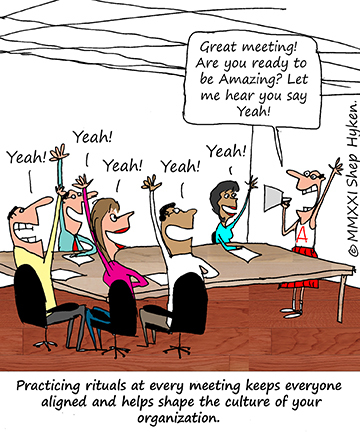 Every Monday morning – or at least the first day of the week I’m in town – we have a team meeting. We begin each meeting with a ritual. We each share a Moment of Magic with the team. This is simply a positive experience we created for either a customer or team member at Shepard Presentations. It can be as simple as returning a call quickly or stepping in to help in a crisis. The point is we all share a story. It helps us keep customer service “front-of-mind” and is a positive way to start a meeting. By the way, this is the same exercise we teach in our customer service training programs. We have clients that have been doing this exercise for years. Why? Because it works!
Every Monday morning – or at least the first day of the week I’m in town – we have a team meeting. We begin each meeting with a ritual. We each share a Moment of Magic with the team. This is simply a positive experience we created for either a customer or team member at Shepard Presentations. It can be as simple as returning a call quickly or stepping in to help in a crisis. The point is we all share a story. It helps us keep customer service “front-of-mind” and is a positive way to start a meeting. By the way, this is the same exercise we teach in our customer service training programs. We have clients that have been doing this exercise for years. Why? Because it works!
There are many other rituals that get people in alignment and ready for a meeting. My friend and amazing coach at The Strategic Coach, Lee Brower, likes to start BIG, where BIG is an acronym that stands for Begin In Gratitude. What a wonderful way to start the meeting.
And sometimes it’s the way you close the meeting. John Foley served as a Marine Corps jet fighter instructor and was the lead solo pilot of the Blue Angels. He shares lessons of his times with the Blue Angels, one of which was a ritual. Every meeting was closed with the following four words: “Glad to be here!”
Those words took on a different meaning depending on what the mission was for the day. It meant they were thankful for the opportunity to serve as a Blue Angel, how they felt about each other, and even how happy they were just to be alive. Those were their closing words, which meant they always left on a high note.
While I’m focusing on customer service with my Moments of Magic ritual, the concept of a ritual that takes place at every meeting can be powerful. How do you start the meeting? How do you end it? Is there something that happens at every meeting to engage the team and align them with what is important to your company?
As mentioned, for us it’s customer service. For Lee Brower, it’s an attitude of gratitude. For the Blue Angels, it’s their mantra. What’s your ritual – or what could be your ritual? If you don’t currently have one, find one that works for you.
Consistency counts. Practice this ritual at every meeting. It brings consistent meaning to your meeting, keeps everyone aligned with what’s important and helps shape and sustain the culture at your organization.
Shep Hyken is a customer service expert, keynote speaker, and New York Times, bestselling business author. For information, contact 314-692-2200. For information on The Customer Focus™ customer service training programs, go to www.thecustomerfocus.com. Follow on Twitter: @Hyken
(Copyright © MMXXI, Shep Hyken)
The post The Customer Service Ritual that Takes Place at Every Meeting appeared first on Shep Hyken.
May 18, 2021
Amazing Business Radio: Robin Hills
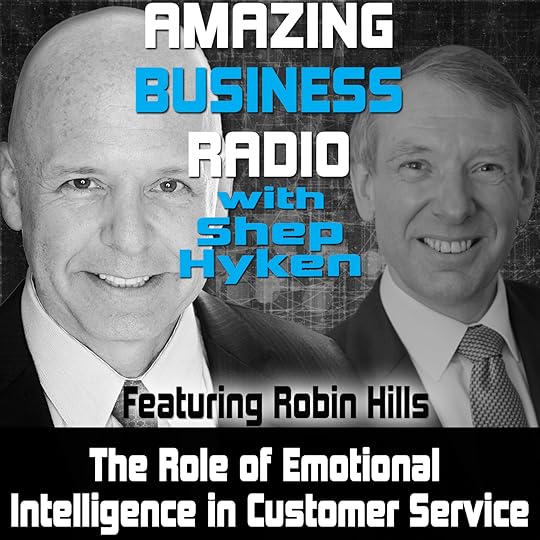 The Role of Emotional Intelligence in Customer Service Utilizing Emotional Intelligence Tools in Building Authentic Relationships
The Role of Emotional Intelligence in Customer Service Utilizing Emotional Intelligence Tools in Building Authentic Relationships Shep Hyken interviews Robin Hills, Director of Ei4Change. They discuss the importance of emotional intelligence in customer service and customer experience.






 Top Takeaways:In customer service and sales, we build authentic relationships and help our customers to make the right decisions using their logic and emotions.The most fundamental part of emotional intelligence is understanding what goes on inside our minds. We have to understand our own personalities and emotions so we can understand others.Self-awareness is knowing what you are good at and identifying your limitations. Know how to minimize your weaknesses and connect with people at a deeper level using your strengths, focus, and preferences.Self-regulation is knowing how to manage your emotions to deal with and adapt to the environment that you are in.Self-awareness and self-regulation help us to modulate our emotions, adjust our pace, and ask questions that enable us to better serve our customers.Emotional Intelligence involves how you engage with clients, build empathy, read the emotional climate that you are in, and adapt.Sympathy is not empathy. When you are being sympathetic to others, you are expressing your own emotions and taking on a superior role. Empathy is taking on an equal role and understanding things from the customer’s perspective.Quotes:
Top Takeaways:In customer service and sales, we build authentic relationships and help our customers to make the right decisions using their logic and emotions.The most fundamental part of emotional intelligence is understanding what goes on inside our minds. We have to understand our own personalities and emotions so we can understand others.Self-awareness is knowing what you are good at and identifying your limitations. Know how to minimize your weaknesses and connect with people at a deeper level using your strengths, focus, and preferences.Self-regulation is knowing how to manage your emotions to deal with and adapt to the environment that you are in.Self-awareness and self-regulation help us to modulate our emotions, adjust our pace, and ask questions that enable us to better serve our customers.Emotional Intelligence involves how you engage with clients, build empathy, read the emotional climate that you are in, and adapt.Sympathy is not empathy. When you are being sympathetic to others, you are expressing your own emotions and taking on a superior role. Empathy is taking on an equal role and understanding things from the customer’s perspective.Quotes:“Emotional Intelligence is how you combine your thoughts with your feelings to make good quality decisions and build authentic relationships.”
“Customer service is not about you. It is about serving people according to their needs.”
“You don’t need to agree with your customers to show empathy. You need to understand their perspective, viewpoints, and how it affects their interaction with the world.”
“Robots cannot do customer service the way humans can. They do not have the human essence that makes us capable of empathizing with others.”
About:Robin Hills is the Director of Ei4Change and author of The Authority Guide to Emotional Resilience in Business and The Authority Guide to Behaviour in Business.
Shep Hyken is a customer service and experience expert, New York Times bestselling author, award-winning keynote speaker, and your host of Amazing Business Radio.
This episode of Amazing Business Radio with Shep Hyken answers the following questions … and more:
What is Emotional Intelligence? How important is Emotional Intelligence in customer service and customer experience? What is the difference between sympathy and empathy? Why is empathy important to customer service? How do self-awareness and self-regulation relate to customer service?The post Amazing Business Radio: Robin Hills appeared first on Shep Hyken.
May 17, 2021
5 Top Customer Service Articles of the Week 5-17-2021
Each week I read a number of customer service and customer experience articles from various resources. Here are my top five picks from last week. I have added my comment about each article and would like to hear what you think too.
How to handle customer complaints? 6 tips you must know by Alibaba.com
(Alibaba.com) This article summarizes 4 common types of customer complaints and worked out 6 tips to handle them smartly and strategically.
My Comment: Let’s start this week’s TOP FIVE roundup with an important topic that I’ve written on many times in the past, and that is how to handle customer complaints. The first five tips could actually be seen as a process; respond quickly, acknowledge, apologize, resolve the problem and follow-up. The sixth tip, which features specific verbiage to use, is very tactical.
How to Nurture Your Online Customers And Turn Them Into ‘Brand Evangelists” by Peggy de Lange
(B&T) Building a connection with existing customers is just as integral to any marketing strategy as winning new ones, but how do we turn customers into spokespeople for our brands?
My Comment: For our readers who are focused on online customers, this is a great article for you. It’s difficult to create a connection when the primary mode of communication between the company and the customer is digital. Fiverr has been one of my favorite online brands for years. One of their executives is sharing some of their secret sauce. Guess what? Even if you don’t have a major online presence, this is also for you.
Customer Empathy: Four Data Points for Understanding How the Pandemic Has Impacted the Customer Experience (CX) by Janelle Estes
(eWeek) The data points in this article can help companies gain a better understanding of how the pandemic has affected CX, and what they can do to meet and exceed customer expectations now and in the future.
My Comment: Our customers have changed during the pandemic. Actually, it’s more that their expectations have changed. This article shares some observations that seem to be more prevalent based on the way COVID-19 changed the way we shop, interact, communicate and more.
How to Commit Your Brand to Customer Success by Jared Atchison
(Business2Community) There are countless ways to grow your brand as a small business owner. Effective marketing, a strong customer support team, and a robust content strategy all contribute to the development of your company. When you look at all of these factors, you’ll find that they have something in common.
My Comment: There is a difference between customer service and customer success. Customer service is about interactions between the company and the customer. Customer success is what happens after the sale that ensures your customer has a good experience – a successful experience – with what you sell. Once your customers buys, you want them to have the best possible experience with your product. That might mean teaching them to use the product properly, following up with tutorials, and more. If you currently don’t have a customer success program, this article will give some insights to help get you started.
4 Ways for Marketers to Maximize Customer Retention by Jenn Horner
(destinationCRM) When you add together a year that turned marketing on its head, a rise in consumer expectations for how brands engage with them, and growing angst and regulation around data privacy, there’s no denying that brands must prioritize customer retention efforts in 2021.
My Comment: I’ve been thinking a lot about customer retention lately, especially as I launch my upcoming book (I’ll Be Back: How to Get Customers to Come Back Again and Again). Customer Retention is more important than ever. Before you can have loyal customers, you have repeat customers. This article covers some interesting content related to two reasons you want to focus on retention and specific steps on how to make that happen.
Shep Hyken[image error] is a customer service expert, professional speaker, and New York Times bestselling business author. Go to The Customer Focus™ to learn more about our customer service training programs. Follow on Twitter: @Hyken
The post 5 Top Customer Service Articles of the Week 5-17-2021 appeared first on Shep Hyken.
May 14, 2021
Guest Post: 5 Rules for a Great Customer Experience
This week we feature an article by Ashwini Dave, a digital marketing expert at Acquire, a conversational customer experience software platform. She shares five rules that businesses should follow to create a great customer experience.
If you think brands can get away with a shoddy, below-average customer experience and put the blame on COVID-19, consider this: “Post-COVID, 59% of consumers care more about customer experience when they decide what company to support or buy from”. In fact, research claims that creating a customer experience (CX) strategy will act as a stepping stone for businesses in 2021. So, it makes logical (and business) sense to understand how your brand can rise above the competition and deliver an extraordinary, despite being in the thick of a global pandemic. Let’s jump right in.
The 5 Cardinal Rules for a Stellar CX Drive customers towards self-help.There was a time when driving a “contactless, self-service driven” customer experience was considered innovative; today is a necessity. Consider how universal QR codes have become in restaurants. This self-service-led trend is here to stay.
A recent study by Oracle claims that around “35% of customers will be more comfortable staying at a hotel if the facility offers contactless payment.” So if your business is not keen on adopting a self-service route, you may lose out your edge. One effective way brands of all shapes, sizes and forms can embrace self-service is by using a knowledge base software to create a repository of quality and updated information and empower customers to answer FAQ-type queries themselves.
Take a look at Asana’s knowledge base page which is organized, educative, in-depth, and informative.
Key takeaway: A knowledge base software allows brands to set up a centralized repository of information that can address customer queries with speed and convenience. This trend will dictate in 2021 and beyond, owing to its immediacy and ability to help customers at literally the click of a button.
Offer a personalized experience.Personalization as a brand ethos worked wonders pre-COVID and will continue to drive a positive customer experience post-COVID. As per data, “80% of customers are more likely to make a purchase when brands provide a personalized experience.”
So the real question then becomes how brands can personalize the customer experience from start to finish? Let’s take a look at a few real-life examples for inspiration.
Amazon uses artificial intelligence and data to drive personalization.

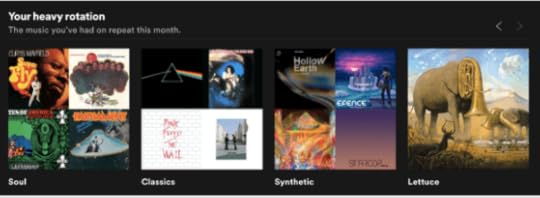
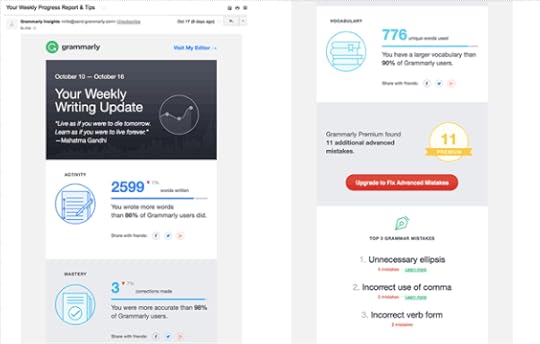
Key takeaway: At the heart of hardcore personalization lies real-time data. Brands that invest in collecting and analyzing real-time user data will be winners of personalized CX in the long run.
Listen and take the customer queries and feedback seriously.If there’s one brand that takes its customers seriously, it is Starbucks. Consider the following instances if you don’t believe us:
The brand created a dedicated website – “My Starbucks Idea” for starters to empower customers to leave feedback and suggestions.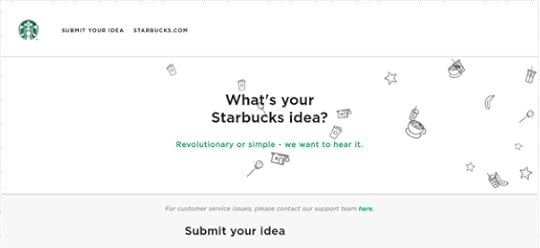 Here’s how successful this campaign has been over the years.
Here’s how successful this campaign has been over the years.
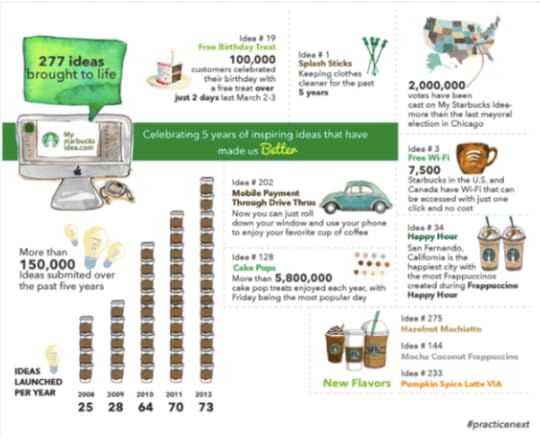
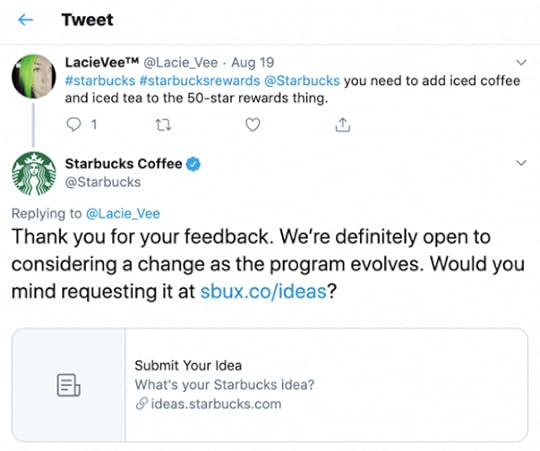
Key takeaway: The end goal is to offer users a real platform to voice their concerns and suggestions. It is not simply about providing a fancy suggestion box. It is about driving customer engagement and building a community of brand loyalists who can share, discuss, and openly communicate about what’s working with the brand (and what’s not).
Train your employees right.Owing to COVID-19, employee training has become more important than ever. Your employees may have questions about major changes in the business policies, their role while working from home, and what kind of expectations the company has from them while working remotely. This is why cross-training, up-skilling, and re-training are taking the center stage.
As a brand, here are five tips on how you can train your employees, remotely and effectively:
Curate your digital training assets by looking at customer feedback and questions, and link them back to the company’s long-term purpose and strategy.Drive consistent real-time conversations with your team to set the right expectations and understand how your employees are faring.Clearly communicate the training benefits to your employee base so that they are motivated to undertake the training.Focus on creating short and focused e-learning modules instead of driving longer, boring training material.Encourage experiential learning by modeling your digital content on real-world experiences, as Lessonly demonstrates below.Key takeaway: As a thumb rule, drive employee training that’s fun, interactive, informative, and memorable. You can make use of training software to lessen the workload while ensuring that your CX team stays up-to-date.
Focus on customer journey maps.Today, the average customer uses multiple touchpoints to communicate with a brand. And most customers expect brands to provide contextual information in real-time while users engage in an omnichannel approach. This is where a customer journey map comes in handy.
To put it simply, a customer journey map is a visual representation of the user’s journey with your brand. It provides a glimpse of your customer’s experiences with your brand across all touchpoints–from social media and email to live chat and website.
Here’s an example of a customer journey map that offers insights into the user’s pain points, activities, and motivations, allowing the brand to deliver a hyper-personalized customer experience.
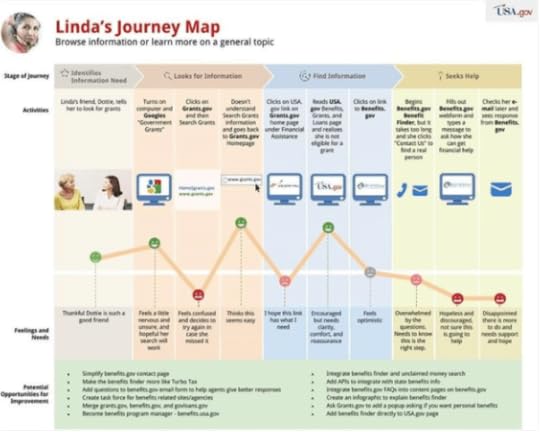
Remember that to create a customer journey map, you will need to understand your ideal customer to the t and get accurate information on their interests, buying behavior, preferences, and dislikes, and so on.
Key takeaway: If you wish to ensure that no customer of yours slips through the cracks, you need to engage in the process of customer journey mapping and optimize your customer experience from the insights gathered.
The Bottom LineHere’s the long and short of it: Customer experience is all about building a positive relationship with your customer and delivering on the promise you made to your customers, every single time. As long as you put yourself in the customer’s shoes and place their interests ahead of everything else, you’re good to go.
Follow these time-tested CX strategies and supercharge your customer experience to enter the (iconic brand) hall of fame.
Ashwini is passionate about business, entrepreneurship, e-commerce, emerging technology, and digital marketing. You can find her on Linkedin.
F
 or more articles from Shep Hyken and his guest contributors go to customerserviceblog.com.
or more articles from Shep Hyken and his guest contributors go to customerserviceblog.com.
Read Shep’s latest Forbes article: Want To Create Customer Loyalty? Make The Customer An Owner
The post Guest Post: 5 Rules for a Great Customer Experience appeared first on Shep Hyken.
May 12, 2021
What’s Normal for Us Can Be Amazing to Others
[image error]
During my live presentations, there is a part of my speech where I talk about Moments of Magic. These are positive experiences we create for our customers, including our internal customers, also known as our fellow employees. (If you’ve been following my work, you already knew that.)
In the speech, I’ll ask audience members to share an example of when they created that experience.
During a recent keynote presentation to an audience of managers of a major retail chain, an example was shared, and it was a good one. A customer had left her purse at the store. It was found by an employee who put it in the manager’s office for safekeeping. Just as the manager was about to call the customer, the customer called the store. She was elated that the purse was found and said she would pick it up first thing in the morning.
The next day, the customer arrived and was so appreciative. In addition to that appreciation was a surprise. She couldn’t believe that everything was still in the purse, including her wallet, credit cards, and cash. The employees didn’t understand why she was amazed that everything was there. Wasn’t that the way it was supposed to be?
Of course, it is. The store employees are honest. However, when the customer lost her purse, she started imagining the worst. She thought the purse was probably gone forever. In her mind, someone had probably found it, taken the money and credit cards, and dropped the purse in a trash can. She was expecting the worst.
This is human nature. In stressful situations, it’s hard to avoid negative thinking. Once she realized her purse was safe and nothing was taken, she was relieved and grateful, even though she had feared the worst.
On the other side of the story were the employees who did what they were supposed to do, without really thinking about it. And there is the point. Doing what is normal is sometimes amazing to others. For example, it surprises me when we return a phone call on the same day the customer calls, and they say, “Wow, that was quick!” It makes me wonder what their expectation is. Do they expect to have bad service or a slow response? Unfortunately, it may be what they are used to.
This is why delivering amazing customer service really is within the grasp of everyone and every company. I preach to be better than average – even just a tiny bit better – all the time. That’s what gets people to say, “They are amazing.” It’s consistent and predictable. And often that “tiny bit better than average” is really the way it should be, anyway. It’s common sense. Be nice. Return calls quickly. Thank the customer for making a purchase. And of course, if the customer leaves a purse or wallet, keep it safe for them. After all, it’s what we’re supposed to do. But to the customer, that’s what makes us amazing.
Shep Hyken is a customer service expert, keynote speaker, and New York Times, bestselling business author. For information, contact 314-692-2200. For information on The Customer Focus™ customer service training programs, go to www.thecustomerfocus.com. Follow on Twitter: @Hyken
(Copyright © MMXXI, Shep Hyken)
The post What’s Normal for Us Can Be Amazing to Others appeared first on Shep Hyken.

